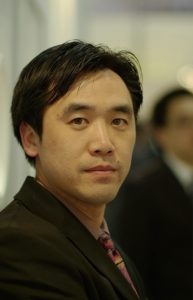
After more than 40 years of operation, DTVE is closing its doors and our website will no longer be updated daily. Thank you for all of your support.
Rising the media industry up into the cloud
Kunbin Hong, director of vertical Solution (media and ISP), Huawei Western Europe Enterprise Business, looks at some of the benefits of cloud technology to enable media companies to meet the challenges they currently face.
 From creating content itself to broadcasting it, the rise in digitisation has completely changed the way media organisations work, with providers such as Netflix and Amazon Prime completely changing the way we consume entertainment.
From creating content itself to broadcasting it, the rise in digitisation has completely changed the way media organisations work, with providers such as Netflix and Amazon Prime completely changing the way we consume entertainment.
At the same time, the rise of connected devices and mixed reality technology means that audiences are finding new ways to consume content all the time. With the launch of 4G, and developments quickly being made for 5G, immersive viewing experiences in high quality are quickly becoming the norm.
Now, the pressure is on for media companies to compete for attention by identifying new ways of using technology to keep audiences engaged.
Benefits of cloud
One of the key ways media organisations can deal with this is by using cloud computing to ensure the scalability, flexibility and agility to meet the demands today.
Cloud solutions enable businesses within the media industry to meet consumer demand, compete against other contenders in the market and to also keep on top of new developments in the sector. This ensures quick delivery of content, scalability to manage peak times and the ability to deliver ongoing innovation on a regular basis.
Using cloud to enable omnimedia
Télévision Française 1 is the largest TV station in France and one of oldest operating TV stations globally. For 28 years, Télévision Française 1 was the only TV station in France. In 1975, it was renamed TF1 and began enterprise operations. With many specialised cable TV stations, TF1 enjoys a 24% audience rating, making it the number one TV station in France and one of the most popular in Europe.
To broadcast the news, TF1 traditionally used digital, IP-based programmes to broadcast programmes in HD or SD.
There were a number of challenges that TF1 faced:
- Low utilisation of media assets: Independent IT infrastructures of the multiple channels block information sharing. For example, under the original architecture, if the news channel needed to use some video resources from the sports channel, an additional server was required to copy the videos to the storage system of the news channel. The process was both time- and bandwidth-consuming.
- Frequent switchovers between office and production desktops seriously deteriorated news production efficiency: A journalist usually needs two desktops, one for processing emails and Internet searches and the other for media editing, which is usually located in different areas. During the media editing process, journalists need to move between these two areas, which wasted time and impacted deadlines.
- Low utilisation of the original IT system: Traditionally major services including ingestion, editing, broadcasting, media asset management, and content archiving, were independent, isolating IT resources. As a result, delivery of new services was delayed and the process was complex. Procurement of new hardware and software also took longer.
To combat these issues, TF1 used Huawei’s end-to-end integrated media cloud solution that covers underlying servers, as well as upper-layer cloud platforms and desktop software and hardware. The platform enables omnimedia content production and broadcasting anytime and anywhere, bringing customers a smooth and convenient programme production and broadcasting experience. With agile business operation, TF1 can easily address challenges from omnimedia transformation.
The hyper-converged architecture also provides IT resource pools and supports service automation, remarkably reducing the time required for service rollout. E9000, a hyper-converged architecture blade server, is used to achieve on-demand resource allocation and automatic scaling. In addition, resource generation and allocation are based on the ISV service template. This improves deployment efficiency for HD editing, media broadcasting, and rendering software on the media cloud.
As a result of deploying Huawei’s Media Cloud Solution, TF1 has been able to build a converged news production platform that supports current service requirements as well as enabling future developments including efficiency with shared media data improving by 90% and full time production of editing improving by 50%.
The driving force of omnimedia – the cloud
As consumers continue to demand interactive, mobile, and on-demand content from any device, now is the time for the media organisations to adapt not only to keep up, but also stand out from other broadcasters. By turning to the cloud, media organisations are able to improve efficiency and also provide content anytime, anywhere.


